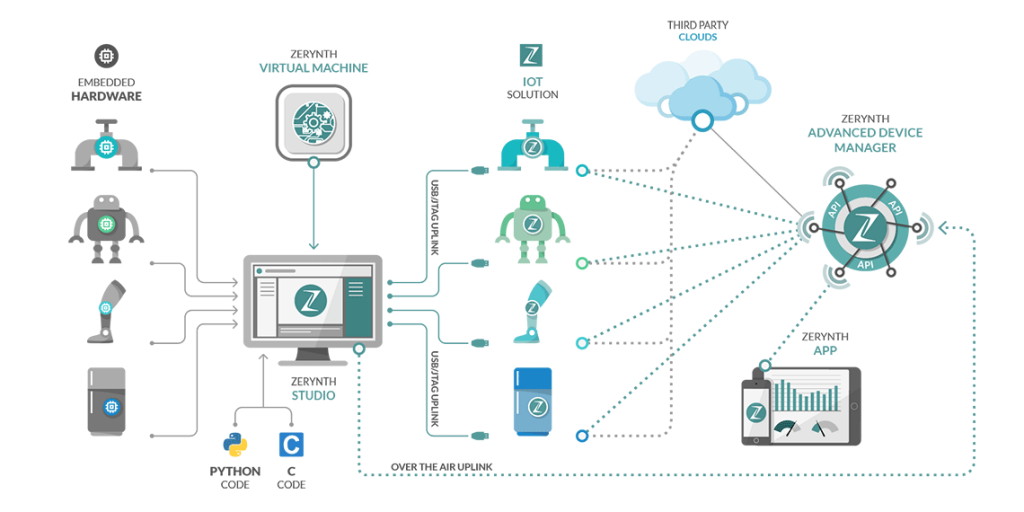AWS Partner Network (APN) Blog
Connecting IoT Devices and Designing Embedded Applications with Zerynth
By Juan Villa, Partner Solutions Architect at AWS
 |
 |
 |
 |
A challenge many industrial and manufacturing corporations face when adopting an Internet of Things (IoT) strategy is the complexity of designing and developing for embedded devices.
This is even more pronounced for corporations that have little knowledge of firmware development for embedded devices, as is the case when established corporations adopt IoT for new product releases.
Traditionally, when working with embedded devices, a developer needs a complex set of tools on their machine, ranging from embedded toolchains (open source are hard to configure, and commercial are very expensive) to Integrated Development Environments (IDEs).
They also need specialty tools to interface with the target embedded hardware device, which has been a long-standing issue with embedded development.
Zerynth, an AWS Partner Network (APN) Select Technology Partner, provides a software development suite that enables Python programming on 32-bit microcontrollers and allows easy connectivity to AWS IoT services. As of this post, Zerynth supports more than 30 different hardware boards, making it a complete ecosystem for IoT development.
By providing a completely integrated development environment with support for Python, Zerynth removes most the complexities of embedded development, thus making it easier and quicker to launch an IoT product to the market.

Figure 1 – High-level overview of an IoT solution built on the Zerynth Stack.
Main Elements of the Zerynth Stack:
- Zerynth Studio – Powerful IDE and toolchain for developing embedded software in Python. It even supports hybrid C/Python development, and is both free and cross-platform.
- Zerynth Virtual Machine – Multi-threaded real-time OS for embedded devices that provides true hardware independence and code reuse on a wide range of 32-bit microcontrollers and boards. The VM supports most high-level Python features like modules, classes, multi-threading, callbacks, timers, and exceptions, with a footprint of just 60-80kb of Flash and 3-5kb of RAM.
Many microcontroller and board manufacturers have already chosen Zerynth as a third-party development tool, including Espressif, Microchip Technologies, Flip & click by Mikroelektronika, Hexiwear by NXP and Mikroelktronika, and RedBear BLE Nano2 and Blend2.
Before starting your next IoT project, check out how the Zerynth Stack can make your team more productive. I also encourage you to watch this video tutorial showing how to connect an ESP32 DevKitC to AWS IoT using the Zerynth Stack.
Zerynth has many other tutorials and announcements on their blog, including this tutorial showing a safe and easy mechanism to perform Firmware Over-the-Air (FOTA) updates of Zerynth-powered devices connected to AWS IoT endpoints.